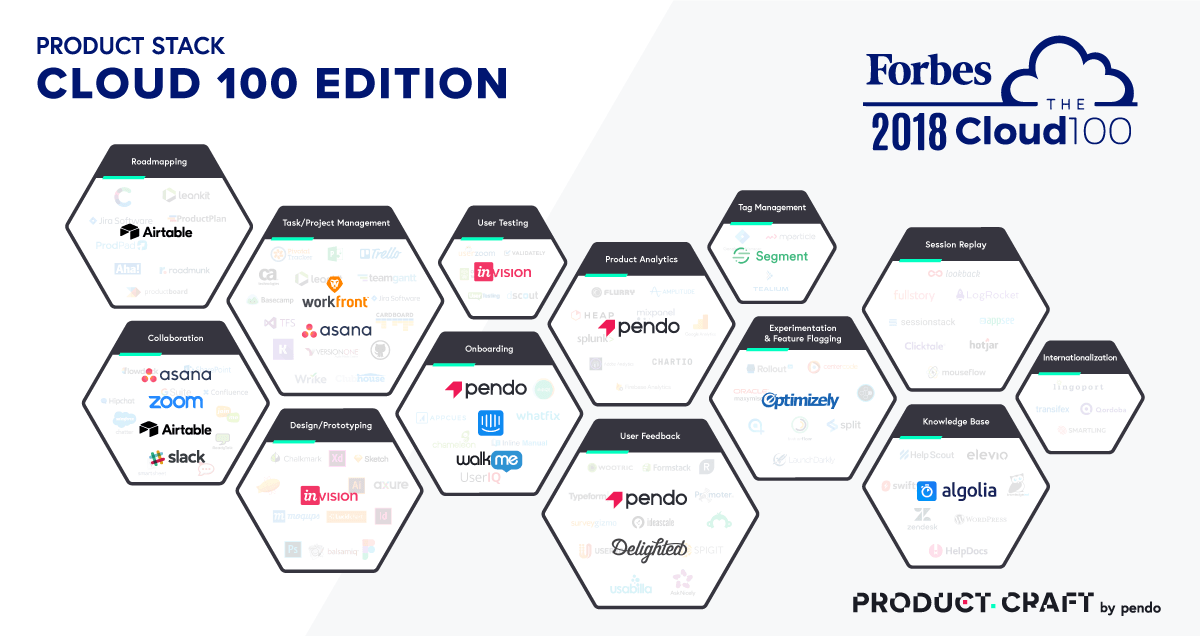Product is hot. Product is important, and practitioners are in demand. Why? Because product experience matters more than ever before. Digital products today are incredibly numerous and diverse (think of any business role, function, or need; there’s probably an app for that). At the same time, our relationship with products is fleeting. Subscription-based pricing makes it easy for customers to switch at the moment of dissatisfaction – or when presented with the shiniest new tool. Bad products can’t hide behind slick packaging or messaging anymore. Product is the new marketing.
Low switching costs aren’t the only reason for this. Digital products are now expected to directly perform a lot of traditional marketing functions. Prospective customers are acquired through digital advertising channels, dropped in a trial or freemium experience, and guided to final sale, or conversion while in the product. Product managers have to build a lot of marketing muscle to shape product experiences that do this well.
Like their marketing peers, product managers are increasingly turning to new tools and technologies for advancement. A wide range of new tools, from experimentation to design and prototyping, are streamlining tasks and instrumenting the product experience with user data collection and feedback. Back in April, ProductCraft published the first compendium of these tools, based on crowdsourced submissions from attendees at the Pendomonium conference and ProductCraft readers.
The Product Stack and the Cloud 100
One piece of supporting evidence for the popularity of product can be found in the recent Cloud 100 list (the annual list of best private cloud companies by Forbes, Bessemer Venture Partners, and Salesforce Ventures). In his summary write-up of the 2018 list, Alex Konrad notes that the most common category in the Cloud 100 was Infrastructure and Developer tools, followed by Collaboration, Security, and Analytics.
However, I would humbly suggest there’s an even more important category: Product. This year’s list contains 14 companies included in the Product Stack – more than any other category save for Infrastructure and Developer tools.

Functional product tools in the Cloud 100 include:
-
- Roadmapping (Airtable): Tools that help product managers document and communicate product strategy, planning, and timelines.
- Task/Project Management (Asana, Workfront): Although product management should never be confused with project management, there are nevertheless many aspects of the day-to-day where task management is essential.
- Collaboration (Slack, Zoom): While not exclusively tools for product managers, PMs have a unique role that requires strong communication and alignment across the organization, and collaboration tools are important facilitators.
- Design/Prototyping (InVision): Iterating at high speed is a critical requirement for modern product teams. These tools allow teams to easily create and collect feedback on product prototypes.
- Tag Managers (Segment): As product teams add to their stack, installation and data integration can become a bottleneck. These tools streamline the process and allow tools to share a consistent set of data.
- Experimentation & Feature Flagging (Optimizely): These tools allow product teams to quickly roll out and test feature iterations with different user segments.
- Onboarding (Intercom, Pendo, WalkMe): Whether it’s through guided in-app tours, smart chat, or knowledge base integrations, these tools help users get faster time to value in the product. Accelerating time to value is always advantageous, but it’s absolutely critical during a limited software trial.
- Product Analytics (Pendo): The era of gut-driven decisions for PMs is over. Like marketers before them, PMs are instrumenting all areas of the customer journey in the product. Analytics tools that are specifically tailored for these use cases are being adopted rapidly.
- User Feedback (Delighted, Pendo, SurveyMonkey): These tools are helping PMs more readily collect feedback from specific user segments and understand how the product experience drives user sentiment.
- Knowledge Base (Algolia): Yes, the traditional software manual still has a lot of value, especially when help content can be surfaced contextually at the users’ moment of need.
Point Tools Are Just the Beginning
This year’s Cloud 100 list illustrates the emphasis that companies are placing on product. Whether it’s infrastructure and development tools that help companies build digital products or the array of solutions in the Product Stack that help companies improve the customer experience they deliver in those products, tools that are product-focused make up 30% of the Cloud 100 list.
Product managers are challenged to build lovable digital products that aren’t just sticky, but have the ability to attract, educate, and “sell” their users through demonstrated value in the product. This is a tall order, and it’s no wonder that PMs increasingly look to new tools to help them along the way.
The collection of tools included in the Product Stack / Cloud 100 list is the beginning of a broader trend. Following the patterns of sales, marketing, and other roles, the array of tools supporting PMs today will integrate, consolidate, and ultimately converge in a functional cloud. As this happens, look for more product-focused tools to receive outsized recognition.
Who’s Next?
We’d love to hear your predictions: which Product Stack members will make an appearance on future Cloud 100 lists?, which ones will go public (like Atlassian and Survey Monkey), and which ones will be acquired (like Delighted)? Please share, comment, and opine.

